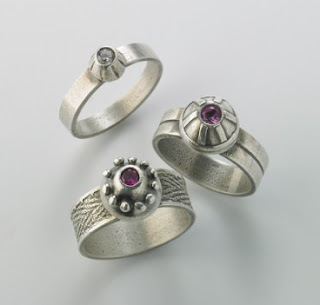| Weight of the world, 2011 from Hollow Mark online catalogue |
Hollow Mark at Griffith University Art
Gallery is Madeline
Kelly’s latest body of work from a successful career that started at Queensland
College of Art in 1999. The exhibition includes a light tunnel, several new
paintings depicting lone and often distorted, dream-like figures as well as
works in lightboxes, sailcloth and fiberglass resin and a wunderkammer of found
objects that inspired the show (1).
One of the most striking works upon entry to Griffith University Art
Gallery is Weight of the World. As two translucent fiberglass
resin panels suspended from the ceiling, measuring three metres each, depict
distorted images of a man carrying books. Although the atlas-like figures draw
immediate attention, it is the books they carry that convey Kelly’s concern for
the environment with titles such as ‘The end of nature’ and ‘Restoring the
land’. This concern for nature, our natural resources and the struggle between
man and nature has been an ongoing theme throughout Kelly’s work (1).
| Ersceinen, 2010 Installation Shot |
Continuing on with this concern is Ersceinen (to appear), a tunnel-like structure covered in foamcore
which is illuminated from behind by spotlights in order to display pin-pricked,
luminous scenes. Although it is unfortunate that the structure appears
unfinished on the outside, it is forgotten as soon as one enters the tunnel to
view scenes of man and nature, together and separately.
| Stucture for Evermore, 2011 From the Hollow Mark online catalogue |
As one leaves the tunnel they are met by Structure for Evermore, where sea
sponges are suspended behind sailcloth and illuminated from behind by
constantly moving lights. The arrangement of the sponges in the form of a lemniscate
(the symbol for infinity) can be seen to refer to both the sponge being one of
the oldest life-forms on the planet but also one supposes, to Kelly’s hope that
nature will prevail and survive the onslaught of man forever. Meanwhile, Plastic Continuity, appears to depict
a struggle between nature and man, as a lone girl appears to fight against a
storm of nature in a large-scale dreamscape.
Kelly’s description of the exhibition as “interested in the
interstices that arrive somewhere between a hollow and a mark; the perplexing
arena where figures and half resolved forms, float out from and into” (1) is
quite evident as Hollow Mark presents
a mixture of myth and fact in an incandescent experience that draws viewers
into Kelly’s surreal world.
| Plastic Continuity, 2011 From the Hollow Mark online catalogue |
By Jessica Row
Hollow Mark by Madeline Kelly is on
display at Griffith University Art
Gallery, 226 Grey St, South Brisbane,
QLD, Australia,
from 8
October – 13 November, 2011
(1) From Hollow Mark Exhibition Catalogue, published by Griffith Artworks, 2011. (which can be viewed online at: http://www.griffith.edu.au/__data/assets/pdf_file/0007/360988/HOLLOW-MARK-Madeleine-Kelly-GUAG-Catalogue_low-res.pdf)

















